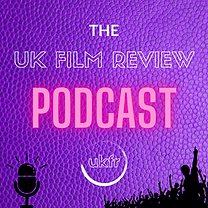Dissonance short film review
- UK Film Review
- Sep 29, 2019
- 2 min read
★★★★★
Directed by: #TobyKearton
Written by: #ConnorMarlborough, Toby Kearton
Starring: #HenryStorrs, #SageSpielman

Welcome to Toby Kearton’s short film, Dissonance: a totalitarian alternative world where music and melody are outlawed and the rebellion of such a law costs you your freedom, and in some cases, life. A world not light-years from Ray Bradbury’s #dystopian classic, Fahrenheit 451 where the simple pleasures in life are stripped from us by the authority of that era.
Henry Storrs plays ‘The Man’. Having been caught innocently playing a melody on his music box, he is stripped of his liberty, and as such, his relationship with his daughter, Sophia (Sage Spielman). When incarcerated, his desire for music never waives, but he yearns for a reunion with his daughter, and plots to make his escape.
Right off the bat: Dissonance is a staggering accomplishment; a flawless short that never puts a foot wrong.
The #cinematography places you in this world and reminds you of the intimacy and the care of a Charlotte Bruus Christensen shoot – focussing on subtlety, expression and the minor details rather than grandeur. The use of black and white and German Expressionism allows for an eerie, dystopian atmosphere reminiscent of Fritz Lang’s Metropolis. And furthermore, not a single shot is wasted, with every frame serving a purpose. This feels like a film that achieved everything it set out to, made by a director who understands the subtle intricacies of filmmaking. Vladislav Nikitin’s editing is also seamless and the film runs like a well-oiled machine.
Ramesh Kumar Kannan’s original score is an extraordinary piece of work, perfectly aligned with the tone of the film. More so than a film with dialogue, music plays a key role in perpetuating the narrative and the tonal sensibilities in a silent film – Kannan’s score achieves just that. The orchestrated set mirrors the subtlety of the #filmmaking, achieves a specific tone throughout the film and also represents an alternative way to develop character in a film that doesn’t use dialogue.
Diegetic sound is also used with equal significance and confidence. Particularly, a scene in which an inmate initiates melody by banging his hands against the wall in which he’s confined. The consequent sequence is a textbook example of how to create tension using sound in film.
It would be easy to see this film just as a love-letter to sound, but it’s equally about oppression in a totalitarian state. The latter in particular allows the cast to shine. Led by Storrs, the cast is able to effortlessly navigate the potentially difficult exercise of performing without dialogue by bridging that gap with the subtlety of facial expression and body language.
Dissonance is a tremendous piece of work; a textbook example of how to develop narrative, shoot cinema, compose an original score and formulate a perfectly-structured picture. Kearton clearly understands the purpose and conventions of visual storytelling and is passionate about the process. It has been announced that Kearton is to make his feature directorial debut with a 2020 release. I for one am eager to see if he can reproduce a similar standard in feature films.
.png)
.png)



Comments